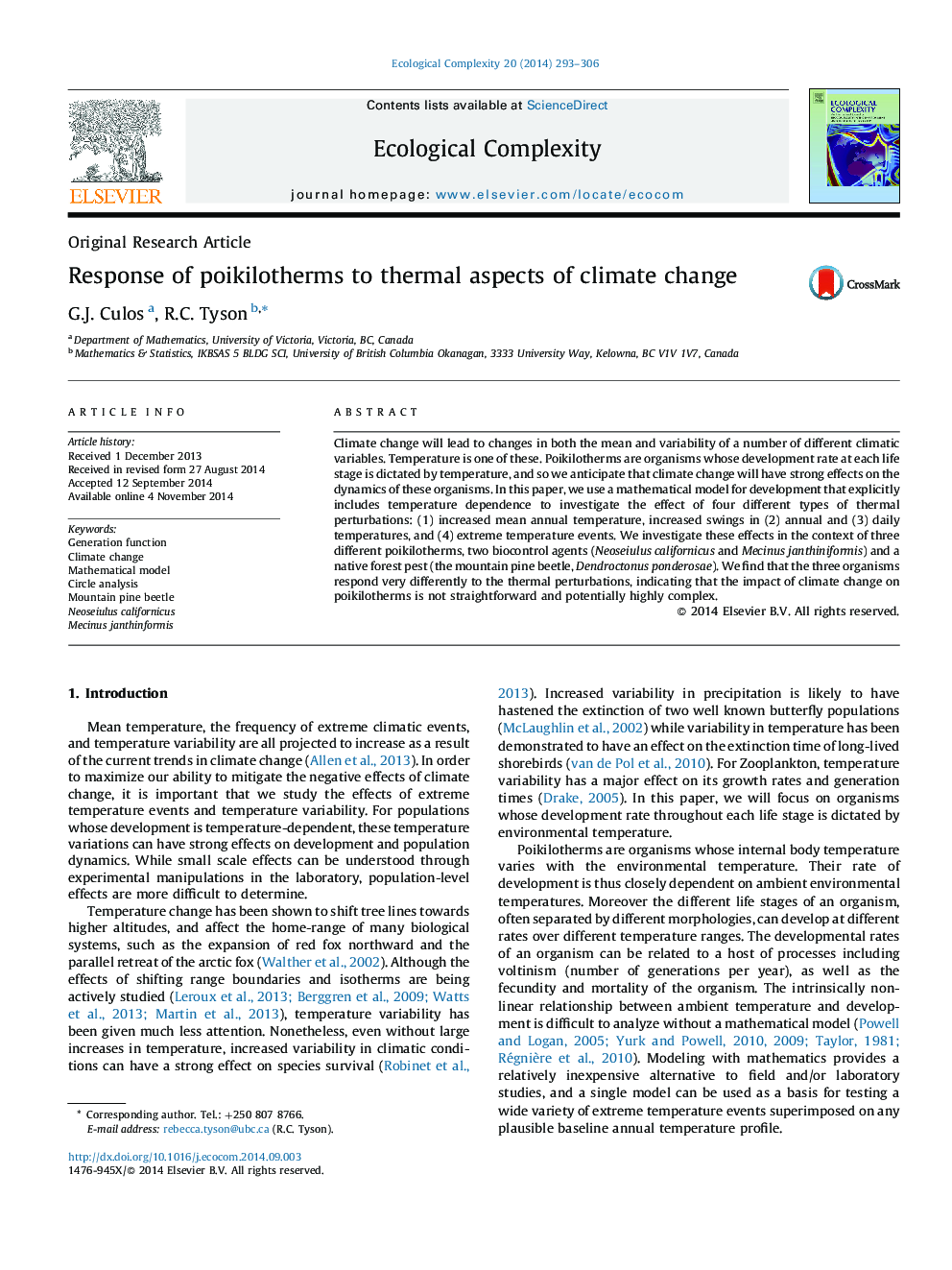| کد مقاله | کد نشریه | سال انتشار | مقاله انگلیسی | نسخه تمام متن |
|---|---|---|---|---|
| 4372382 | 1617094 | 2014 | 14 صفحه PDF | دانلود رایگان |

• G-function analysis can be used to investigate the effect of thermal perturbations.
• Different poikilotherms exhibit a wide range of differing responses to thermal perturbations.
• Climate change could result in increased voltinism.
• Climate change could result in earlier or later oviposition (or emergence) dates.
• Prediction of the population dynamics of poikilotherms (outbreak, voltinism, etc.) requires detailed knowledge of the temperature-dependent developmental rates.
Climate change will lead to changes in both the mean and variability of a number of different climatic variables. Temperature is one of these. Poikilotherms are organisms whose development rate at each life stage is dictated by temperature, and so we anticipate that climate change will have strong effects on the dynamics of these organisms. In this paper, we use a mathematical model for development that explicitly includes temperature dependence to investigate the effect of four different types of thermal perturbations: (1) increased mean annual temperature, increased swings in (2) annual and (3) daily temperatures, and (4) extreme temperature events. We investigate these effects in the context of three different poikilotherms, two biocontrol agents (Neoseiulus californicus and Mecinus janthiniformis) and a native forest pest (the mountain pine beetle, Dendroctonus ponderosae). We find that the three organisms respond very differently to the thermal perturbations, indicating that the impact of climate change on poikilotherms is not straightforward and potentially highly complex.
Journal: Ecological Complexity - Volume 20, December 2014, Pages 293–306